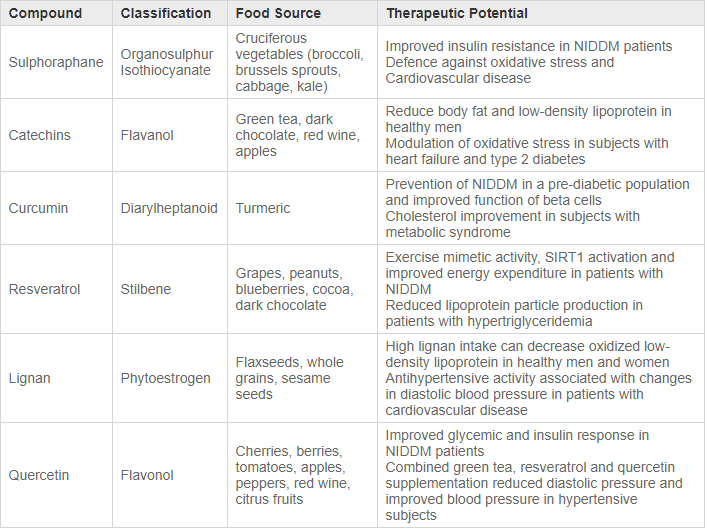David Sinclair, co-director of the Center for the Biology of Aging at Harvard Medical School, believes that, in the not-so-distant future, we will be treating aging like a disease. Aging will be something we not only slow, but stop and even reverse. According to Sinclair, researchers can already change the age of a mouse – both forwards and backwards.
Currently, as we learn more and more about the science behind longevity regulators that speed up and slow the aging process, we are developing anti-aging medicines that can be taken to augment a healthy lifestyle. Also, aided by the rapid evolution of genetic engineering of stem cells, we are starting to witness accelerated breakthroughs in regenerative medicine. And Sinclair is optimistic, that eventually, age-reversing technologies like epigenetic reprogramming will also be common – stuff that was once only imagined in science fiction.
David Sinclair – an Australian biologist who is a professor of genetics and co-Director of the Paul F. Glenn Center for the Biology of Aging at Harvard Medical School.
Longevity Is Only 20% Genetics
 David Sinclair maintains that only 20% of our longevity is genetically determined. The rest is what we do, how we live our lives and increasingly, what molecules we consume.
David Sinclair maintains that only 20% of our longevity is genetically determined. The rest is what we do, how we live our lives and increasingly, what molecules we consume.
Geneticists define aging as the accumulation of epigenetic noise. When cells divide, they should make clean copies of themselves. But as we get older, genetic damage happens and cells start to lose their identity. The more epigenetic noise your cells accumulate, the older you get.
Therefore, we can extend lifespan by safeguarding cellular information as it passes on to new cells.
And how is this achieved?
Avoid Radiation
One way to extend lifespan, according to Sinclair, is by avoiding things that cause damage to your DNA. Try, as much as possible, to avoid radiation from airport scanners, X-rays and CT scans. The sun is also a source of radiation, so don’t go in the sun without sunscreen.
Three Main Longevity Pathways
Much of the ongoing anti-aging research focuses on the three main longevity regulators in the body – AMPK, mTOR, and Sirtuin activators. Pharmaceutical companies are developing drugs, as well as topical treatments, that focus on one or more of these three pathways. Over-the-counter supplements are also currently on the market, though efficacy of these supplements haven’t been thoroughly studied and the quality of many brands is questionable. Finally, healthy lifestyle choices like intense exercise and fasting will also activate these longevity pathways.
AMPK
Many studies have shown that increased AMPK (AMP-Activated Protein Kinase) activity can extend lifespan. AMPK is known as a master regulator of metabolism. Think of it as a master switch that turns on and off as it regulates energy intake and energy expenditure. Essentially, it is an energy-sensing enzyme that improves insulin sensitivity, stimulates metabolism, decreases inflammation, and improves muscle performance.
In 2001 AMPK was shown to be activated by metformin. Generally considered a safe and effective treatment for type 2 diabetes and prediabetes (prescribed since the 1950s), metformin can also help the middle-aged and elderly to stave off the effects of aging. It lowers rates of heart disease, cancer, frailty, and the onset of Alzheimer’s, according to Sinclair.
Other, more natural ways to activate AMPK are through fasting, exercise and intake of dietary fiber. When our energy levels become low (e.g. exercise, stress, hunger), that is when AMPK is activated to help restore balance to our cells. Studies have also shown that water-soluble, dietary fiber (like oatmeal and apples) can enhance AMPK.
mTOR
A growing list of evidence suggests that mTOR (a kinase enzyme that regulates protein synthesis), influences longevity and aging. When amino acids (protein) and/or ATP levels are abundant, activation of mTOR promotes growth and development. This is also correlated with an acceleration in aging. But when amino acids and/or ATP levels are low, mTOR is inhibited. This promotes autophagy (the breakdown and recycling of damaged cells), which is correlated with a deceleration in aging. So in short, mTOR inhibition increases lifespan.
Inhibition of the mTOR complex 1 (mTORC1) with a drug called rapamycin, is currently the only known pharmacological treatment that increases lifespan in all model organisms studied. Rapamycin, unfortunately, has too many side effects to take regularly.
This means that the only safe and reliable means to inhibit mTOR is through calorie restriction and a low protein diet, particularly a diet low in red meat.
Sirtuins
Sirtuins are a key to human longevity because they make enzymes that slow the loss of the epigenetic information. Sirtuins are a class of proteins that regulate cellular health. They play a key role in regulating cellular homeostasis (keeping the cells in a state of equilibrium), and are like emergency responders for DNA – helping repair genes when they get damaged. The only prerequisite is that sirtuins can only function in the presence of NAD+ (nicotinamide adenine dinucleotide), a coenzyme found in all living cells.
That’s where the molecule MNM (nicotinamide mononucleotide) comes in. Its a booster that our bodies convert to NAD+. The NAD+ puts sirtuins to work preventing cellular information loss. The effect – cleaner copies of cells – which Sinclair believes will help our bodies stay younger for longer.
The MNM molecule isn’t available in any FDA regulated drugs right now (as of 2020), though the supplement industry is already selling MNM and other NAD+ boosters. Dr. Sinclair, himself, takes supplements, though he admits that more studies are needed to prove their efficacy and safety.
All said, MNM supplementation shouldn’t be your primary source for NAD+. The very best way to ensure that your body is getting sufficient NAD+, therefore activating sirtuins and slowing the aging process, is to encourage its natural production. We can do this by triggering our body’s natural stress responses – triggering hormesis – via healthy lifestyle choices.
Hormesis – Promoting Human Longevity
Hormesis is a biological phenomenon whereby a beneficial effect (improved health, stress tolerance, growth and/or longevity) results from exposure to low doses of an agent that is otherwise toxic or lethal when given at higher doses. With respect to longevity, mild stressors like exercise, calorie restriction, heat and cold stress, and consumption of certain plant-derived phytochemicals, cause our cells to produce more NAD+ (fuel for sirtuins). Paraphrasing from Friedrich Nietzsche, “that which does not kill me, makes me stronger.”
Exercise
One way to activate hormesis and the production of NAD+ (and AMPK) is by stressing out our cells through exercise. This includes both lifting weights and losing your breath from intensive exercise like high-intensity interval training (HIIT). High intensity training has a particularly strong hormetic effect on your mitochondria (mitochondrial hormesis), boosting your cells ability to generate energy and stave off old age.
Fasting
Calorie restricted diet is another hormetic stressor with huge benefits. The ideal window for fasting is between 16 and 48 hours. Shorter than that and you don’t see all the benefits. Longer, and you start to experience negative side effects like dips in energy and muscle loss. A particularly effective practice is something called intermittent fasting, where you fast for 16 hours a day and consume all of your calories during the remaining 8 hours. This, according to David Sinclair, is sufficient to activate the body’s survival instinct and boost NAD+ levels (plus inhibit mTOR), which is good for human longevity.
Hot & Cold Therapy
 Sinclair also recommends stressing our bodies with hot and cold temperature changes. The benefits of hot and cold therapy can be attributed to shock proteins. Your body produces these special proteins, appropriately named cold-shock proteins and heat-shock proteins, in response to sudden, extreme changes in temperature. Shock proteins protect your cells and trigger repair. They’re an excellent example of hormetic response.
Sinclair also recommends stressing our bodies with hot and cold temperature changes. The benefits of hot and cold therapy can be attributed to shock proteins. Your body produces these special proteins, appropriately named cold-shock proteins and heat-shock proteins, in response to sudden, extreme changes in temperature. Shock proteins protect your cells and trigger repair. They’re an excellent example of hormetic response.
Xenohormesis And Nutritional Medicine
Another method to trigger hormesis, one attracting a great deal of attention in anti-aging research, is xenohormesis. Basically, many non-nutritional, plant-derived phytochemicals activate stress responses and homeostasis mechanisms in animals. These beneficial compounds, known as phenolic compounds, are known to have antioxidant and anti-inflammatory properties, and have been directly linked to reduced mortality rates in humans.
One way to increase concentrations of phenolic compounds in fruits and vegetables, according to Sinclair, is by applying mild stress in the form of high light, heat shock and chilling shock. Eating plants that have been environmentally stressed will enhance antioxidant capacity and phenol content.
 One of the most promising and well-researched xenohormetic polyphenols is resveratrol, a stilbene commonly known for its presence in red wine. Also found in foods like blueberries and cocoa, concentrations in natural foods are relatively small. According to David Sinclair, consuming as much as 500 mg per day may be necessary to provide significant health benefits. And since red wine only provides, on average, 12.5 mg per liter, one should supplement with pharmaceutical-grade resveratrol to attain anti-aging benefits. Sinclair suggests taking trans-Resveratrol over cis-Resveratrol (since the latter doesn’t activate the sirtuin enzyme). All this said, supplement forms of resveratrol are poorly absorbed in the gastrointestinal tract, which has led to ongoing research by pharma companies to find a resveratrol formulation with better absorption rates.
One of the most promising and well-researched xenohormetic polyphenols is resveratrol, a stilbene commonly known for its presence in red wine. Also found in foods like blueberries and cocoa, concentrations in natural foods are relatively small. According to David Sinclair, consuming as much as 500 mg per day may be necessary to provide significant health benefits. And since red wine only provides, on average, 12.5 mg per liter, one should supplement with pharmaceutical-grade resveratrol to attain anti-aging benefits. Sinclair suggests taking trans-Resveratrol over cis-Resveratrol (since the latter doesn’t activate the sirtuin enzyme). All this said, supplement forms of resveratrol are poorly absorbed in the gastrointestinal tract, which has led to ongoing research by pharma companies to find a resveratrol formulation with better absorption rates.
Other phytochemical compounds that exhibit hormetic effects…

Regenerative Medicine – Stem Cell Therapy
Another exciting branch of medicine related to human longevity, one that is progressing rapidly, is regenerative medicine using stem cell therapy. Regenerative medicine promotes the repair of diseased, dysfunctional or injured tissue using stem cells or their derivatives.
One form of regenerative medicine is to grow stem cells in a lab, manipulate them to specialize into specific types of cells (heart muscle cells, blood cells, nerve cells, etc.), then implant or inject the healthy cells into the body.
Another variant is to inject a small-molecule drug that activates nearby stem cells into producing new cells. Such a procedure can be used to regenerate cartilage in a knee, intervertebral disc in a spine, neural cells, retinal cells, skin cells, etc.
Finally, sometime in the not-too-distant future, its also believed that we will be able to regenerate entire organs for transplantation via 3D bioprinting. In this next chapter of organ transplantation, bioprinters will be able to print collagen organ scaffolds, then infuse them with human cells in a process called recellularization. The goal is to utilize stem cells that will grow and differentiate, ultimately providing the proper functionality.
Epigenetic Reprogramming
David Sinclair believes that one day, it will be possible to rejuvenate human cells by reprogramming them back to a youthful state. Just like a superhero, we will be able to heal and restore injuries and age-related damage via epigenetic reprogramming.
Since a major cause of aging is the accumulation of errors in the epigenome (the system of proteins that packages the DNA and controls access to its genes), if we reverse these errors, we can restore a cell’s vigor and eliminate signs of aging. The basic idea is to utilize powerful agents known as Yamanaka factors, which reprogram a cell’s epigenome to its time zero, or embryonic state.
In 2006 Dr. Shinya Yamanaka, a stem-cell researcher at Kyoto University, amazed biologists by showing that a cell’s fate could be reversed with a set of four transcription factors – agents that activate genes – that he had identified. A cell dosed with the Yamanaka factors erases the marks on the epigenome, so the cell loses its identity and reverts to the embryonic state. Erroneous marks gathered during aging are also lost in the process, restoring the cell to its state of youth. Dr. Yamanaka shared the 2012 Nobel Prize in medicine for the work.
The trick with epigenetic reprogramming, is to ensure that cells retain their identity. With the Yamanaka factors, there is a narrow therapeutic window between erasing aging markers and potentially overstimulating them and causing out-of-control cells that are cancerous. Clearly, there’s a fine line to walk. One easier said than done. And this challenge is now the focus of many pharma companies and research departments. This includes Life Biosciences, a human longevity company out of Boston in which David Sinclair is both co-founder and chairman of the board. Life Biosciences, which is taking a systemic approach of tackling all the hallmarks of aging collectively, is very interested in the potential of epigenetic reprogramming.
Epigenetic reprogramming is one of the most exciting areas of longevity research. If it can be successfully translated to people, it has the potential to keep tissues and organs functionally younger. And though epigenetic reprogramming will take years – even decades – to develop and refine, if it works, then we could extend human lifespan substantially. The oldest living person to date has been 122 years,” says Sinclair, “but once epigenetic reprogramming technology progresses, we can expect to live well beyond this age.”
Consequences Of Significantly Extending Human Lifespan
Even if one follows healthy lifestyle choices and supplements with molecules that enhance our longevity pathways, we may still have trouble living beyond our natural lifespan of 100 to 122 years old. We’ll need something more than this to significantly slow, stop or even reverse aging. But according to David Sinclair, breakthroughs in human longevity are on the way. Within a decade or two, we should have medicines that allow us to live an extra 10 or 20 years of healthy lives. And beyond this time horizon, thanks to breakthroughs in regenerative medicine and epigenetic reprogramming, living healthy lives decades beyond this isn’t inconceivable.
And will there be negative consequences? Sinclair acknowledges that risks exist. For instance, who will be able to afford these anti-aging medicines? If they are all very expensive, then we may have a disparity where the rich are living 20-30 years longer than the rest of us. But beyond this, he also believes some of the adverse effects may be overstated. Some skeptics point to overpopulation or ill-effects to the ecology, for instance. David Sinclair maintains that population growth will level off within the next couple of decades, and healthier people are having fewer children. The global population is already stabilizing, and in many advanced countries going down. So people’s fear that the world will be overpopulated with frail old people is completely wrong. “I argue that solving the problem of frailty is one of the biggest positive things you can do for the entire planet, from the economy to the environment,” says Sinclair.
On the other hand, “we’ve always extended human lifespan, and the world has become a better place because of it. It’s important to note that these gains in lifespan will be offset by huge savings in healthcare. We’re increasing healthspan, not just lifespan. That’s tens of trillions of dollars globally per decade that we can put to education and saving the environment.”
Human Longevity Companies – Investing In Anti-Aging Stocks
So where does one look to profit from this trend in human longevity? Since much of the anti-aging science is yet unproven in human populations, it would be wise to take a cautious approach. Spread your bets across various branches of anti-aging research – from pharmaceutical and supplement companies that produce molecules that activate longevity pathways in the body, to those that research stem cell therapy, to those exploring cutting-edge technologies like 3D bioprinting. For starters, we’ve listed 8 interesting human longevity companies which you may want to investigate further.
ChromaDex is a nutraceutical company offering Nicotinamide riboside (NIAGEN), a novel form of vitamin B3 for enhancing NAD+ level used for longevity and healthy aging.
CohBar is a clinical stage biotech company co-founded by David Sinclair himself. They engage in the research and development of mitochondria based therapeutics (MBTs) for the treatment of diseases associated with aging and metabolic dysfunction.
Lineage Cell Therapeutics works in the fields of regenerative medicine, human embryonic stem cell technology and induced pluripotent stem cell technology. It develops therapies intended to rebuild cell and tissue function lost due to degenerative diseases and injury.
resTORbio is a small molecule drug company that develops rapalogs (i.e. rapamycin analogs) to treat age-related disease by targeting the mTOR pathway – one of the body’s key longevity regulators.






